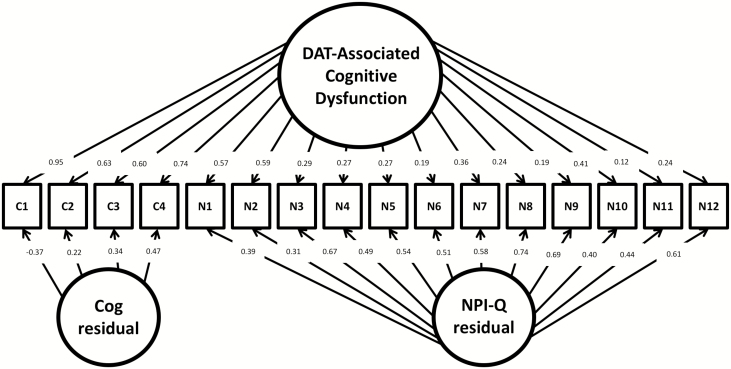Figure 1.
Bifactor model of dementia of the Alzheimer’s type (DAT)-associated cognitive dysfunction represented across cognitive and neuropsychiatric variables. Using a bifactor model, DAT-related cognitive dysfunction is modeled as a function of cognitive and neuropsychiatric variables. Factor loadings indicate each variable’s strength of relationship to the general factor (DAT-related cognitive dysfunction), as well as the cognitive or neuropsychiatric residual factors. Note: cog = cognitive; NPI-Q = Neuropsychiatric Inventory Questionnaire; C1 = memory cognitive factor; C2 = language cognitive factor; C3 = visuospatial cognitive factor; C4 = executive function cognitive factor; N1 = NPI-Q Delusions; N2 = NPI-Q Hallucations; N3 = NPI-Q Agitation/Agression; N4 = NPI-Q Depression/Dysphoria; N5 = NPI-Q Anxiety; N6 = NPI-Q Eltation/Euphoria; N7 = NPI-Q Apathy/Indifference; N8 = NPI-Q Disinhibition; N9 = NPI-Q Irritability/Lability; N10 = NPI-Q Motor Disturbance; N11 = NPI-Q Nighttime Behaviors; N12 = NPI-Q Appetite/Eating.

